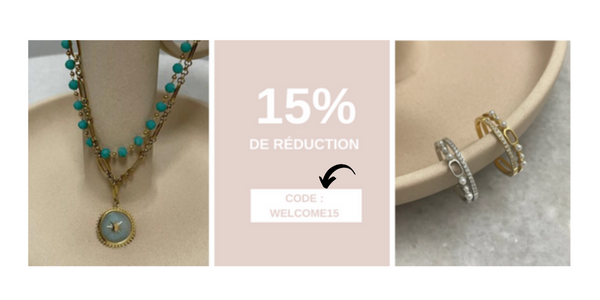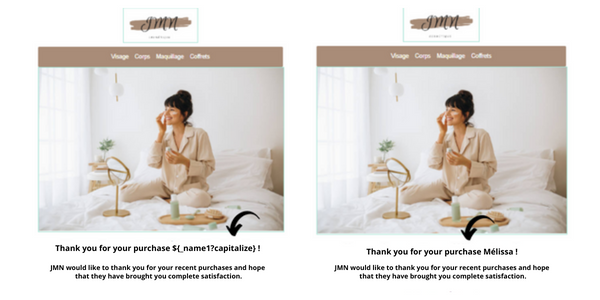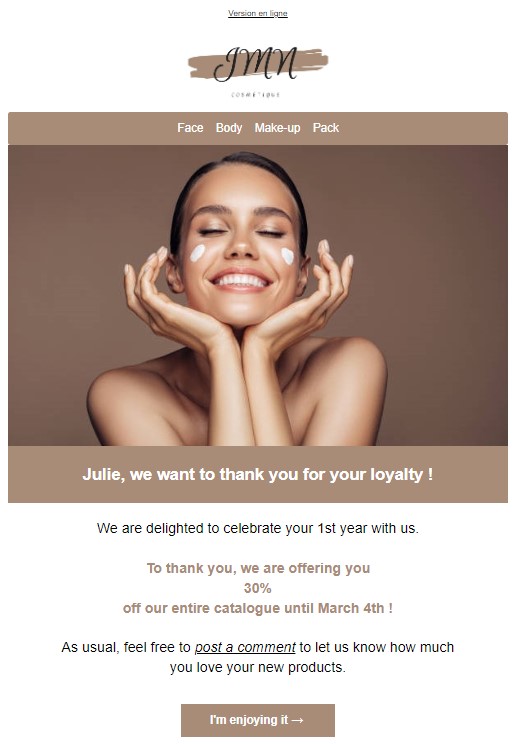Today, it is very important to retain your customers, because competition increases in every area of activity, so you have to know how to keep them.
With the development of e-commerce, the consumer has more power than before. So you have to have a solid loyalty strategy. In addition, turning a prospect into a customer costs more than retaining existing customers.
Why build customer loyalty
Retaining your customers is crucial for your business to increase your sales. Your loyal customers are more profitable than your occasional customers, because they buy more frequently and often recommend products or services to their entourage or on the internet.
Emailing is a powerful tool to keep your customers engaged and loyal. By sending email campaigns regularly, you can stay in touch with them, offer benefits, offer special offers or new products.
The advantages of emailing to retain your customers
Emailing is an effective tool for customer loyalty and has several advantages:
- It’s a method of direct communication: you can send emails to a mailing list to keep in touch with your customers and keep them engaged
- It’s an inexpensive way to build loyalty: emailing is generally cheaper than other communication methods like television advertising or radio.
- It’s an effective way to target: you can use your customers’ data to segment your mailing list and target emails based on their interests and needs.
- It’s a customizable way to build loyalty: you can use automated emails to send personalized emails based on customer actions.
- It’s a way to track loyalty effectiveness: you can measure the performance of your email campaigns and optimize them based on the results you achieve.

Steps to follow to retain your customers with emailing
- Make a customer mailing list: Before embarking on an emailing strategy to retain your customers, it is important to gather relevant information about them and obtain their consent. A database is the starting point for sending messages.
Thus, to obtain this information, you must always ask your prospects if they wish to receive news by email. It is therefore imperative to create a registration form on your website so that your customers can voluntarily decide to receive your emails. We also recommend that you set up a double opt-in, or confirm your consent. - Segment your mailing list: Use customer data to segment your mailing list into groups with similar interests and needs.
- Use tracking tools: Use tracking tools to measure the performance of your email campaigns and optimize them based on results. You can track your performance with Probance One in the Performance menu.
- Welcome your new customers: Prepare an automated, personalized welcome email with a promotional code to thank them. You need to communicate about your history and the added value of your brand. Avoid always having a promotional approach in your emailing campaigns. For your newsletters, we advise you to offer more editorial content through advice, information about your products.

- Personalize your emails: Use customer data to personalize emails (first name, product name in the basket, product name visited, etc.). Customization will increase opening and conversion rates.

- Reward your customers: Offer exclusive benefits to your loyal customers to thank them for their commitment. Offer shipping costs, offer a personalized discount for an audience group or a gift for the purchase of a product. Don’t hesitate to set up a loyalty program. Your customers must feel privileged.

- Analyze results: Analyze the results of your email campaigns to assess the effectiveness of your strategy and make adjustments accordingly.
- Stay engaged: Continue to keep your customers engaged by regularly following these steps and adapting your loyalty strategy
Mistakes to avoid
Here are some mistakes to avoid when using email to build customer loyalty :
- Send unsolicited emails: ending unsolicited emails can irritate your customers and make them unsubscribe from your mailing list. Think opt-ins! (see step 1 above).
- Send non-personalized emails: Sending generic emails that are not customized to the interests and needs of your customers can result in low opening and conversion rates.
- Neglect follow-up emails: Follow-up emails after a purchase are important to ask for feedback on the product or service and to keep your customers engaged.
- Ignore re-engagement emails: re-engagement emails are important to reconnect with your customers who haven’t bought in a while and get them back to business.
- Neglect tracking: Racking tools are important for measuring the performance of your email campaigns and optimizing campaigns based on results.
- Ignore customer feedback: Customer feedback is important to identify strengths and weaknesses in your company’s products or services and improve customer experiences.
Measuring your loyalty actions
- Open rate: his rate measures the number of recipients who opened an email in relation to the total number of recipients. This lets you know if emails reach your customers and if your items are attractive. To improve it, you can use customization.
- Click rate: This rate measures the number of recipients who clicked on a link in an email relative to the total number of recipients. This lets you know if emails are prompting your customers to act.
- Reactivity rate: This rate measures the number of clicks compared to the number of openers. This rate is interesting to follow, because the result gives you an indication of interest in the content of your email.
- Conversion rate: This rate measures the number of recipients who purchased or performed another action relative to the total number of recipients. This lets you know if the emails have an impact on the sales or the desired actions. Customizing calls to action can increase conversion rates.
- Unsubscribing rate: This rate measures the number of recipients who unsubscribe from the mailing list relative to the total number of recipients. This lets you know if emails are perceived as unwanted.
- Bounce rate: This rate measures the number of recipients for which an email failed to be delivered relative to the total number of recipients. This lets you know if invalid or inactive email addresses are present in the mailing list and if you need to clean the list.
How to win new customers through loyalty
- Loyal customers are often brand ambassadors: Satisfied and loyal customers are more likely to recommend the company’s products or services to those around them, which can help attract new customers.
- Positive customer reviews on e-commerce sites, social networks or review sites can help attract new customers by giving them confidence in the quality of your products or services.
- Special offers for new customers: You can offer special offers (for example, a discount on the first order) to encourage new customers to try your products or services.
In short, retaining existing customers is a great way to attract new customers using referral, loyalty programs, personalized email campaigns, positive reviews and special offers.

Conclusion
In conclusion, emailing is an effective tool for customer loyalty thanks to a regularity in the sending of newsletters, re-engagement emails and by customizing emails according to customer data. To put in place an effective emailing strategy, you need to focus on using targeted and personalized campaigns and on optimizing for results. It is important to continue to test and optimize your strategy to improve results and build customer loyalty.